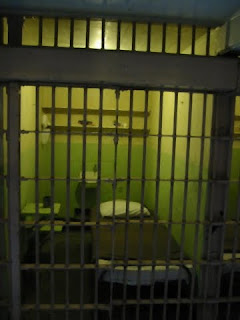The flickering images of Neda Agha-Soltan’s last moments in a Tehran street on June 20 before she died from gunshot wounds gripped the world, galvanized the nation and made the 26-year-old music student the face of Iran’s recent protest movement.
Five months after an unknown assailant took her life at a demonstration in the Iranian capital staged by pro-reform activists, supporters across the world have spearheaded a grassroots initiative in a move to immortalize her.
Through the use of various social media outlets such as Facebook and Twitter, they are pushing to make Agha-Soltan Time magazine’s Person of the Year 2009.
Each year, the U.S.-based magazine grants the title to one or several persons who "most affected the news and our lives, for good or ill, and embodied what was important about the year."
Administrators of the more than 1,000-member strong Facebook group "Nominate Neda Agha-Soltan as the Time Woman of the Year" say she deserves the title because she has become “the symbol of the recent Iranian movement towards democracy and freedom" through her tragic death that shocked the world.
Members of the group are encouraged to send letters to Time magazine to vote for Agha-Soltan and spread the word to their friends.
The campaign is also triggering traffic on the micro-blogging service Twitter, where supporters of the initiative are "tweeting" their thoughts on why Time magazine should choose Agha-Soltan as its Person of the Year and calling on fellow Twitterers to give her their vote.
Last year, Time magazine named President Obama its Person of the Year.
When he won the Nobel Peace Prize last month, a surprised and humbled Obama made, perhaps, an oblique reference to Agha-Soltan when he said in his acceptance speech that the award was not only about the work of his administration but also about the "courageous efforts of people around the world" who strive for "justice and dignity."
While giving examples of whom he considered courageous, President Obama spoke of "the young woman who marches silently in the streets on behalf of her right to be heard even in the face of beatings and bullets."
Coinciding with the calls for Agha-Soltan to be named Time magazine's Person of the Year, Glamour magazine recently named the women activists behind Iran's One Million Signatures initiative its "Women of the Year 2009." The campaign calls for more women's rights in Iran and urges an end to alleged discriminatory laws against women in Iran.
The campaign is also triggering traffic on the micro-blogging service Twitter, where supporters of the initiative are "tweeting" their thoughts on why Time magazine should choose Agha-Soltan as its Person of the Year and calling on fellow Twitterers to give her their vote.
Last year, Time magazine named President Obama its Person of the Year.
When he won the Nobel Peace Prize last month, a surprised and humbled Obama made, perhaps, an oblique reference to Agha-Soltan when he said in his acceptance speech that the award was not only about the work of his administration but also about the "courageous efforts of people around the world" who strive for "justice and dignity."
While giving examples of whom he considered courageous, President Obama spoke of "the young woman who marches silently in the streets on behalf of her right to be heard even in the face of beatings and bullets."
Coinciding with the calls for Agha-Soltan to be named Time magazine's Person of the Year, Glamour magazine recently named the women activists behind Iran's One Million Signatures initiative its "Women of the Year 2009." The campaign calls for more women's rights in Iran and urges an end to alleged discriminatory laws against women in Iran.












